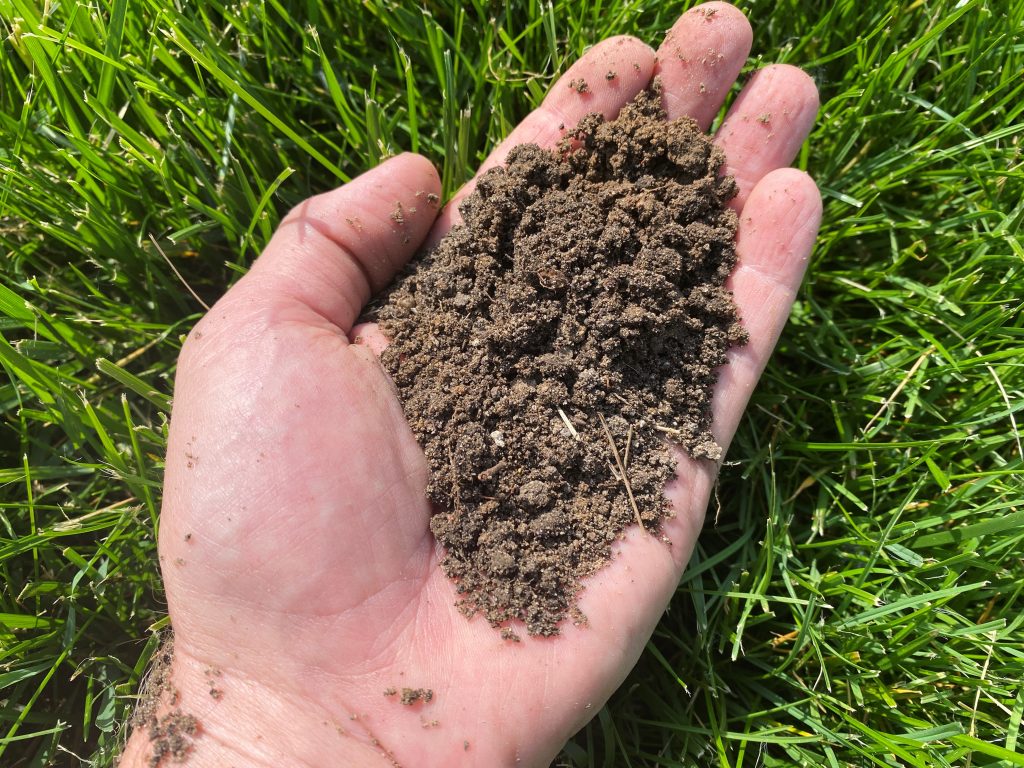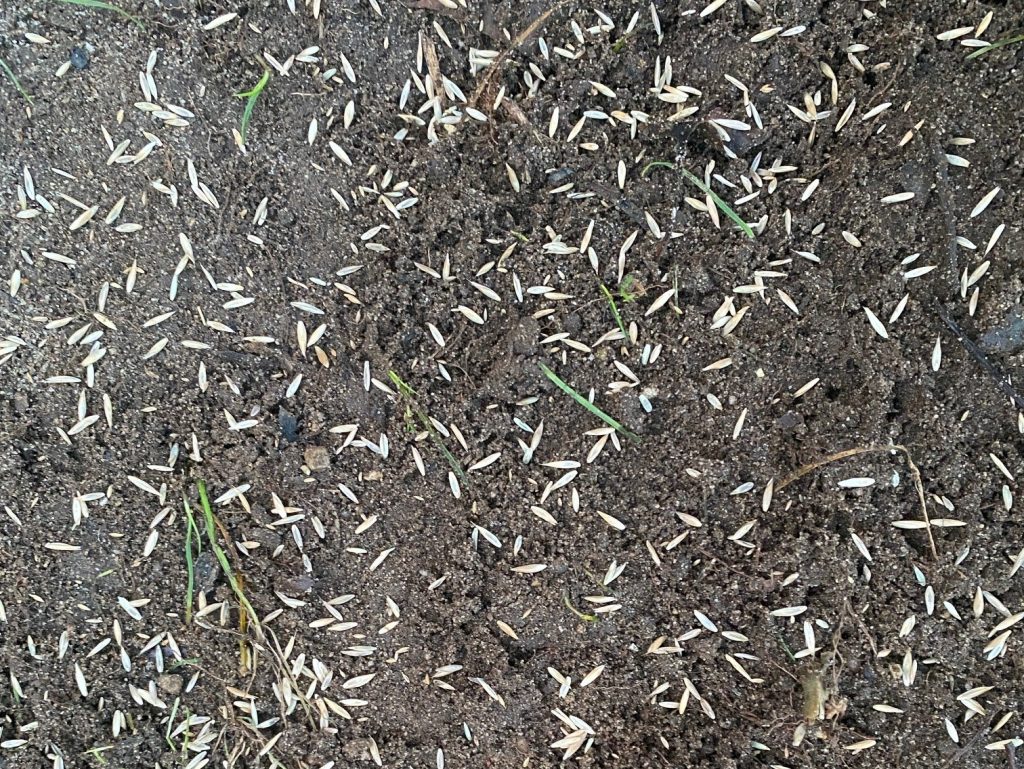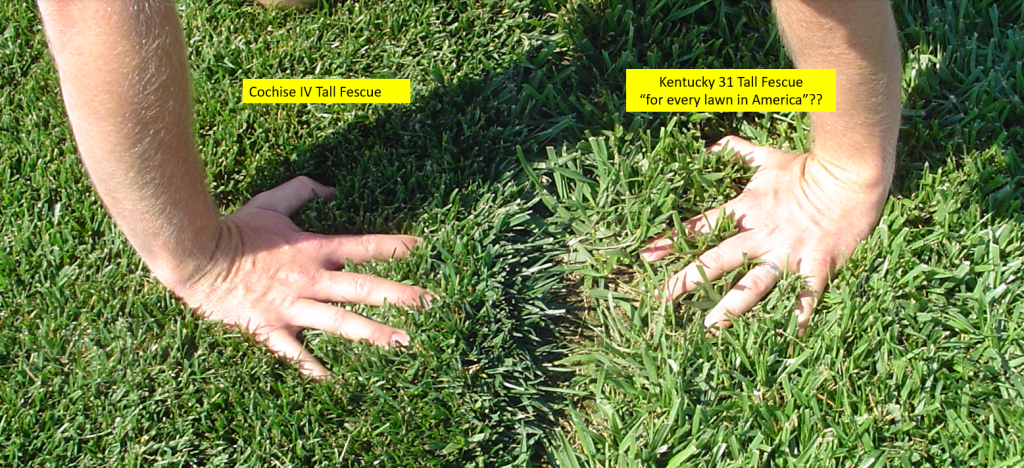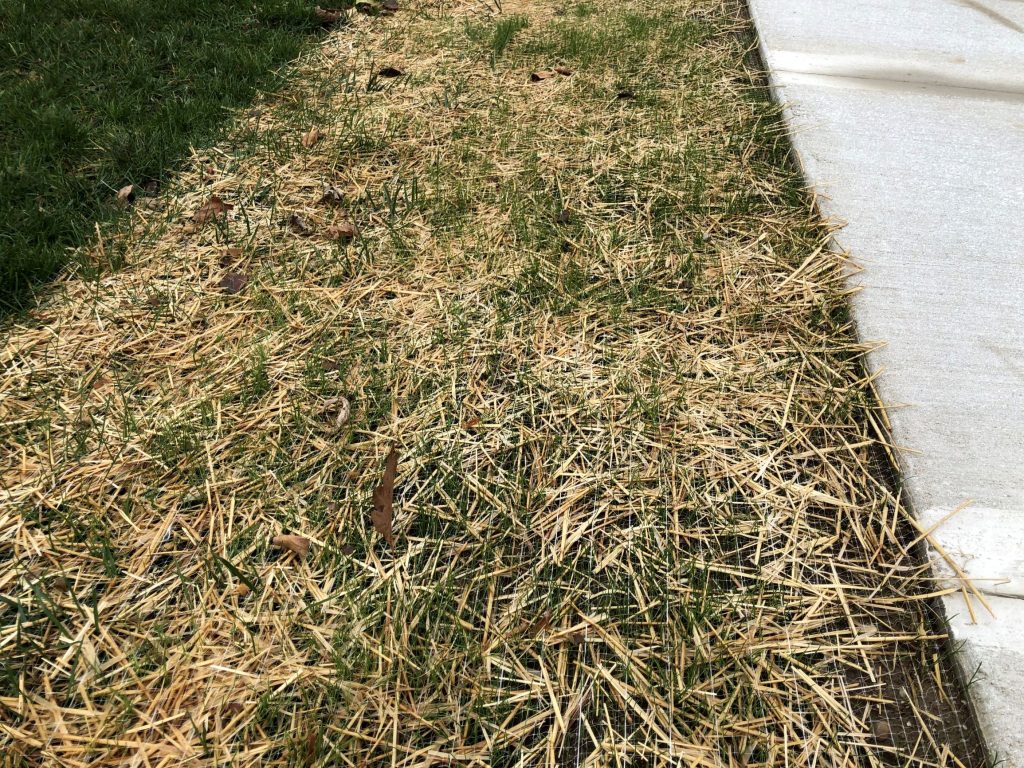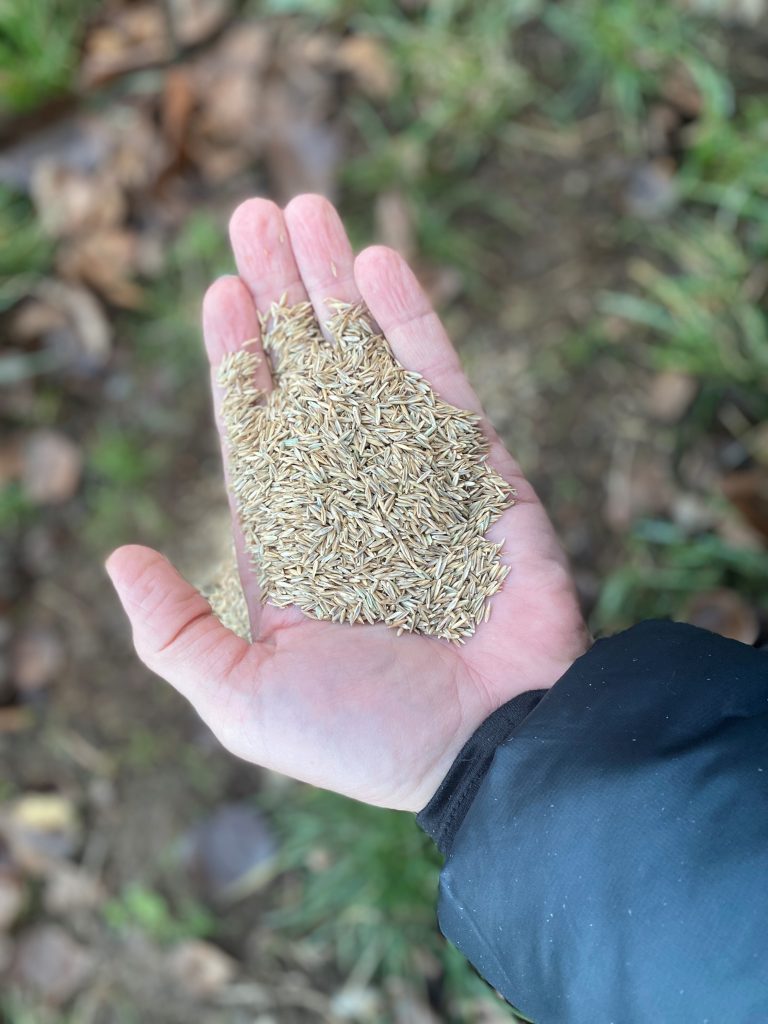
One of the most common questions lawn care professionals get is “What kind of grass seed should I plant in my yard?”
Choosing the right seed for the right situation is critical for establishing and maintaining a beautiful lawn. That’s what the following information is all about.
Let’s consider some questions that will help you navigate the seed waters. There are 5 of them:
1. What’s my soil type?
Is your soil sandy or is it heavy clay? Sandy soil doesn’t hold moisture very well and clay tends to hold moisture too well. If your soil is sandy, you’ll want to choose grasses that will handle low moisture conditions well, such as turf-type tall fescue.
If your soil is clay, you may be able to plant products like perennial ryegrass and bluegrass with great success.
Your local top-notch garden centers will most like carry mixes and blends that will fit the soil conditions of your property. And very likely you live in an area where the vast majority of the homeowners share the same type of soil. So your local independent garden center is very likely well-prepared to give you great advice on what to plant.
2. Do I have irrigation?
If you’re planting a school playground that doubles as a soccer field, you may want to plant an improved blend of turf-type tall fescue AND install irrigation. There’s going to be a whole lot of traffic out there!
If you have a normal lawn care situation (i.e. – it doesn’t double as a soccer field), and you have irrigation, your choices for what turf to select are much wider.
If you want a golf course look, you can go with perennial ryegrass. If you want the beautiful, well-manicured baseball field look, you can select bluegrass. OR you can combine bluegrass and ryegrass in a mixture.
No matter what you choose, you’re at a great advantage because you are controlling the water.
If you don’t have irrigation, you may struggle with bluegrass/ryegrass and may want to go back to a mix with predominantly a turf-type tall fescue component. This grass not only stands up to traffic but also handles drought stress much better than other grasses. Plus the newer varieties are dark green, soft, and have thinner blades than the older fescue varieties.
If you are planting a turf-type tall fescue mix (with maybe some bluegrass and ryegrass), make sure the tall fescue component is at least 75% of the mix – so that you don’t get a clumpy look to your yard.
Your seeding rate for turf-type tall fescue will be 8-10 pounds per 1000 square feet. Some professionals recommend 12 pounds. So you’re putting out a lot of seed, but your long-term maintenance will be less.
3. Will I be planting in a sunny area or shady area?
Although all grass needs light to survive, some do work better in areas where sunlight is limited to only a few hours a day.
In this case, you would look for a seed mix that was labeled “shady mix” or “premium shade” or something along those lines.
These should include grass species like sheeps fescue, hard fescue, and fine fescue.
Keep in mind that all grass needs some sunlight, but the shady mixes tend to tolerate less light than most.
If you’re considering trying to plant grass seed into a deeply shaded area, you may want to reconsider. That may be a better spot for some mulch, hostas, and a reading area.
4. Will there be a lot of traffic in this part of my yard?
If the neighborhood boys live in your backyard playing wiffle ball, that’s A LOT of traffic. In this case, you can do a couple of things: either move to a new sub-division OR make a plan to grow some grass that can stand up to your future major leaguers. Seed selection is everything in this situation.
If you want a beautiful lawn that stands up to the traffic, and you don’t want to move, you are going to need new, improved varieties of turf-type tall fescue.
WARNING: Kentucky 31 Tall Fescue is not new, and it is most definitely not improved (see this post). And most importantly, it’s NOT a lawn grass. If you see the word “Kentucky” on a bag of seed, that doesn’t mean it’s bluegrass. This is one of the big reasons to stay out of the “big box” stores when selecting your grass seed.
However, if you’re using the field for strictly a playground or a backyard ball field, and you don’t care what the neighbors say about it, Kentucky 31 will hold up the best to the traffic.
5. What’s my zone?
If you live in the southern part of the United States, you’ll most definitely be making different seed choices than a homeowner living in northern Michigan.
Instead of the seed listed above, you’ll be selecting products like Bermudagrass, St. Augustine grass, and Zoysiagrass. These plants are particularly well-adapted to your region. They thrive in the sunshine and heat and require very little water to maintain.
Check with your local university extension office or professional lawn and garden center for the best grass seed varieties for your specific area!
